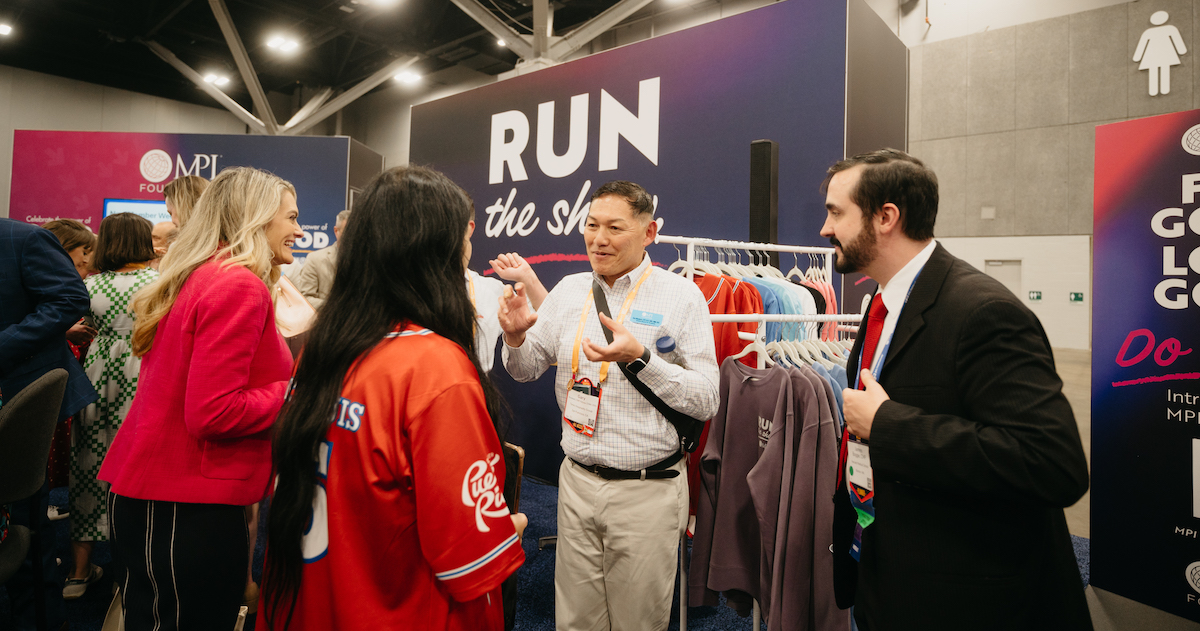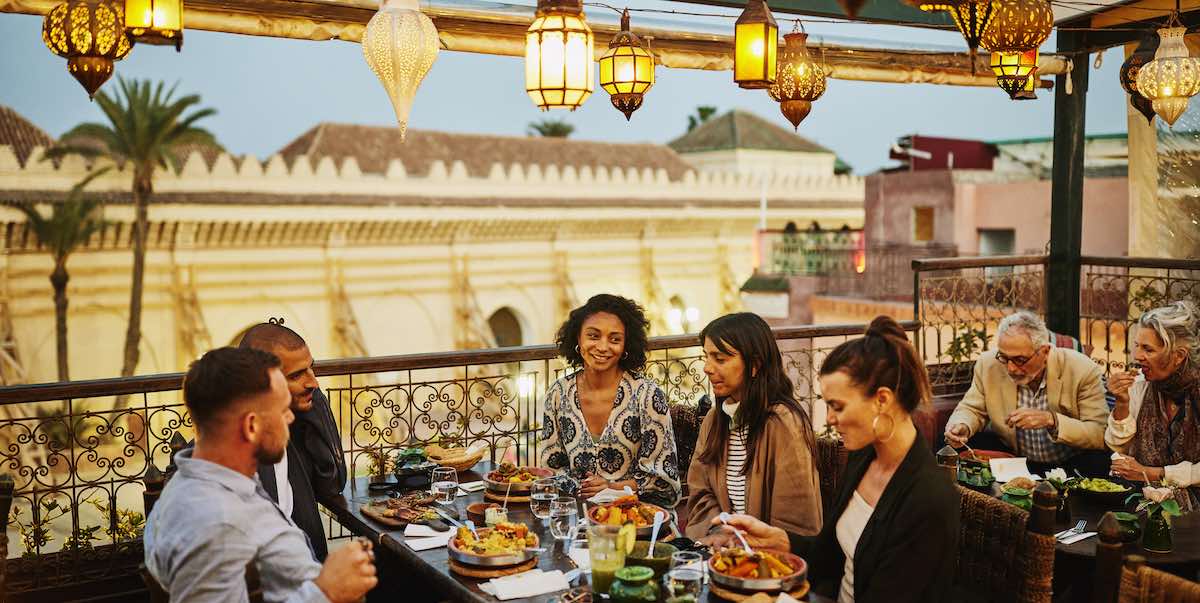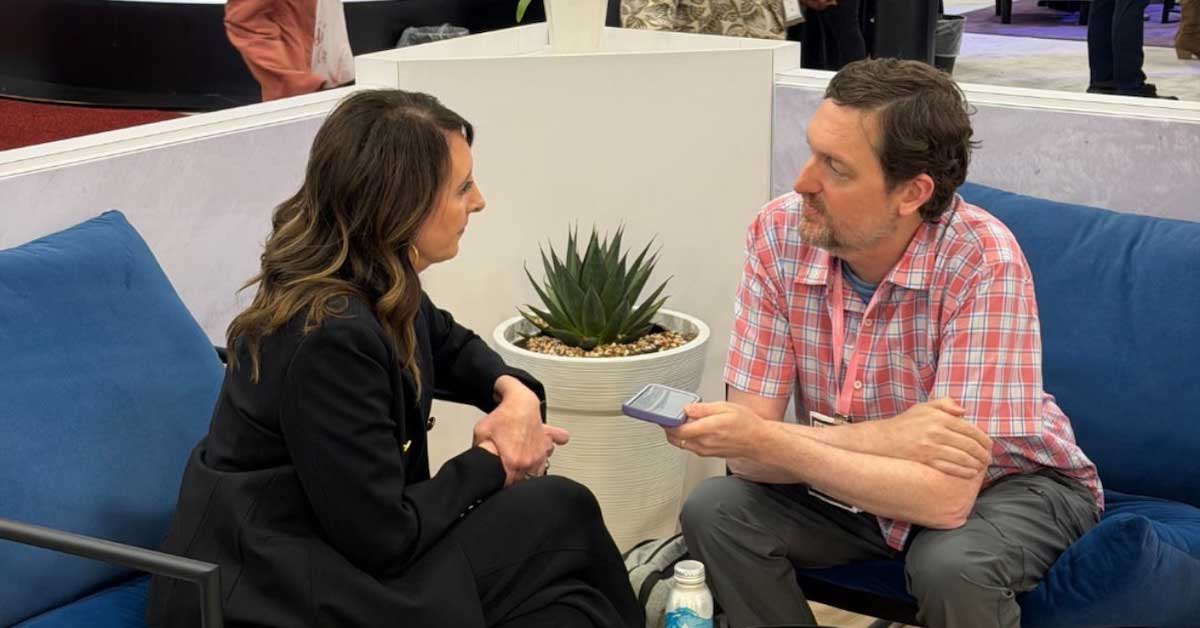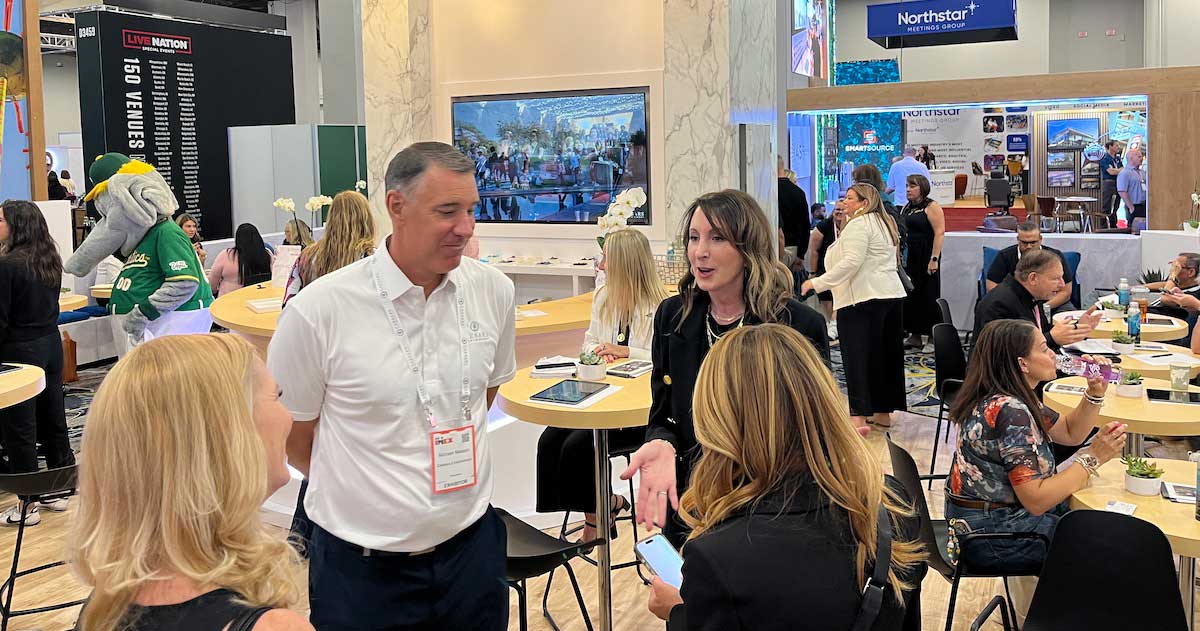From safety and security to F&B trends to diversity and inclusion at events, MPI members from across the globe discuss some of the industry’s most pressing issues. This is part two of a two-part series.
Here are the members who shared their insights with us: Sven Boelhouwer, owner, No Desk (MPI Netherlands Chapter); Tahira Endean, CMP, DES, CED, head of events, Society for Incentive Travel Excellence (MPI At Large); John Ehlenfeldt, CDME, CMP, executive vice president, Visit Huntington Beach - Surf City USA (MPI Southern California Chapter); Tiffany Graham, CMP, senior meeting planner, Ascension Health (MPI St. Louis Area Chapter); Mariska Kesteloo, founder, Word of MICE (MPI Belgium Chapter); Melissa Majors, CEO, Melissa Majors Consulting (MPI At Large); Lisa Meller, CMP, CIS, CED, managing director, Meller Performance Events Group (MPI Orange County Chapter); Alex Plaxen, MTA, president/founder, Little Bird Told Media (MPI Potomac Chapter); Dawn Rasmussen, CMP, chief résumé designer, Pathfinder Writing and Career Services (MPI Oregon Chapter); Arlene Schilke, CMP, DES, managing partner, Timewise Event Management Inc. (MPI Greater Edmonton Chapter); Sarah Soliman Daudin, DES, president and CEO, Soliman Productions Inc. (MPI Greater Orlando Area Chapter); Makiko Yamamoto, president, Finesse Hospitality Management Co. Ltd. (MPI Japan Chapter).
What F&B trends are having the biggest impact at events?
Food is leading the experience now! It’s no longer a “must have” afterthought but instead is quite front-and-center! Food presentation is critical, and pressure is on the chefs to come up with something unique, locally grown, sustainable and thematic. Attendees are looking for interactive and build-your-own stations, and they’re enjoying, once again, shared family-style experiences. People also expect authentic local experiences, and the food choices must be sensitive to this. Additionally, the increasing demands to satisfy a growing number of recorded food allergies and cited aversions are impacting events. These demands for higher food quality, creative and attractive presentation, personalized choice, increased freshness, locally grown and interactive stations also impact cost at all levels. Market prices are up, but so are labor requirements and costs for food presentation. -Meller
“Do it for the ‘gram!” The way your food looks is as important as how it tastes. Attendees are looking for Instagrammable moments, and F&B is a big part of that. -Plaxen
Without a doubt, cannabis-infused food and drinks. Next to that are locally sourced ingredients and locally produced spirits and craft beers. Another big trend with F&B is anything that is visually stunning and interactive (think liquid nitrogen ice cream, charcuterie tables, oyster chucking). Attendees are looking for shareable details that might create buzz on their ‘gram feed. Sadly, pretzels are out. - Schilke
Hands down, local sourcing is having the biggest impact at events. It’s more sustainable because it minimizes the energy used in production and storage and decreases the food’s carbon footprint. It also leads to fresher food and items that are in season. -Graham
Guests and attendees at events in our destination are focused on locally sourced, sustainable food products. Attendees want food and beverage items that succinctly link their culinary experience with the flavor of the destination. In Huntington Beach, fish tacos are the rave—therefore the best offer locally sourced fish that is sustainable with ingredients that give a taste of our beach destination, such as sun-kissed lime juice, vine-ripened tomatoes and California avocado. -Ehlenfeldt
The event cost has been increased as we need to prepare several selections of foods such as gluten-free, vegan, vegetarian, Halal and so on. A difficult part is to distinguish between a dietary restriction and a food preference. If strictly gluten-free, it is sometimes difficult to accommodate with Japanese food, as most of items include gluten, even soba noodle broth. - Yamamoto
How are you promoting diversity and inclusion at events, and what challenges are you facing?
Diversity fatigue is a real phenomenon that has negatively influenced a genuine movement. Often times, diversity advocates have employed “blame and shame” tactics to build awareness and gain support. Unfortunately, these tactics have caused backlash. Our firm is working to illuminate the business case for inclusive practices in a blameless way. These science-based tactics are resulting in people’s minds being much more open to these concepts. Advances in neuroscience indicate that you can trigger the defense mechanism in our brains that often shut these conversations down. We have to stop blaming each other if we want to make progress. In my experience, one of the biggest barriers to progress is attributed to group think. So often, decision-making power is held by a select few who are often surrounded by people who look and think like them. This lack of cognitive diversity unintentionally positions them to make uninformed decisions. -Majors
This discussion is relatively new to the Netherlands, whereas in the U.S. it’s been on the agenda for a while. I must be honest, until a year ago I didn’t think about this at all. As a freelance event organizer, I often work with internal project teams. However, when heading the team of the recent European Meetings and Events Conference (EMEC19) in the World Forum The Hague, this topic was brought to our attention by MPI’s International Board of Directors. At first, we had to find out what it meant exactly, and shortly after that we were facing the challenge of finding a right balance of speakers. It turned out to be harder than we thought. There are still a lot of middle-aged men who promote themselves as expert speakers on certain topics. I’d like to encourage more women to step up and share their knowledge, too! -Boelhouwer
I encourage all my clients to practice strategic tribalization at events. It’s important to develop diverse micro-communities and support them with hashtags, LinkedIn groups, swag, etc. Making each of your attendees feel a part of something is the key to inclusion. I find the biggest challenge is limited resources to support the micro-communities. -Plaxen
In my line of work, I have the opportunity to give people a voice and share it with the masses through video. Regardless of whatever event I am covering, I always make it a point to speak to a more diverse and inclusive audience to get a first-hand account of their experience. It’s important to demonstrate visually and verbally how diverse our events have become and continue to be. Although I face my own set of challenges as a young woman in business, I have learned to turn these challenges into opportunities. When I realized that I constantly had to prove my knowledge and value as not only a young person, but a young business owner in production which happens to be a male-dominated space, I took it upon myself to prove my value by working a little bit harder to build my credibility. I serve on multiple industry boards, particularly within MPI, and volunteer my time, resources and energy to ensure I always have a seat at the table. -Soliman Daudin
Diversity and inclusion is a hot topic that is discussed often within corporations, associations and the event industry. The challenges and opportunities come when you look past the basic components of making sure all backgrounds feel accepted and welcome and extend your focus on attendees feeling they can bring their true and authentic self to their work and their attendance at events. When this is achieved, it is proven through research and surveys that production and output of employees increase up to 25 percent, turnover of employment decreases and loyalty to the organization increases. The rewards of achieving inclusiveness within your events is beneficial to everyone—including the examples of importance to all. -Ehlenfeldt
As an attendee, I make a point to reach out to everyone that I see that is new and make them feel welcome. It’s pretty darned intimidating to come to large events and not know a soul. Take it one step deeper and understand cultural microaggressions, assumed white privilege and lack of inclusiveness, and I can see how some attendees might say planners are talking the talk, but not walking the walk to look beyond their own cultural blinders. We all need to push our own boundaries and be willing to have conversations about difficult topics, and the best way to bridge those gaps and get started is to stick out your hand, smile and say, “Welcome.” More importantly, I listen to try and understand the other person’s viewpoint and what they see as challenges, and then ask what I can do to help. Only together can we work to eliminate those walls. -Rasmussen
How lucky we are to have participants from 40 countries at our global conference! We don’t have to talk about inclusion, we can be inclusive. Travel is the greatest tool we have to bring our world together through experiencing hospitality and sharing cultures. We know the only way to grow a company, innovate an idea or fundamentally change the world we all live in is through embracing humanity in all its nuances and this only happens through education. We have to model this at our events, on our boards, on our teams and open up communication so we learn from each other. It is only through empathy we can do this. We do this one event at a time, thinking about the people who will attend and what their needs may be—from physical needs and dietary preferences through to the way they may prefer to learn or interact with others and strive to create spaces for intersections that lead to dialogue. Have any of us perfected this yet? No. But we will continue to keep this a priority. -Endean
We recently had Mariela McIlwraith in to speak to our chapter about diversity and inclusion and it really sparked a lively discussion. While we all agree that diversity and inclusion need to be part of our event plan, most event planners, who are already struggling with shrinking budgets, are aghast with the cost involved. The second challenge is in making everyone happy. A real-life case in point is an event where an attendee shows up with a service animal next to an attendee with severe dog allergy. It’s challenging to meet diverse needs that are at times in conflict with one another. -Schilke
I have lived in many countries and know how important this topic is. [It takes] more effort to get a diverse team, but it’s worth it to walk the extra mile! In Belgium, when I was the president of the MPI chapter for two years, each board member came from a different country (we were seven people in total). A challenge, but also fun and very inspiring! -Kesteloo
What new safety/security measures have you implemented, and what results have you seen?
I personally have been emphasizing duty of care amongst the team and hope to have discussions with leadership. We’ve always had general emergency procedures and a communications plan in place. We are also always very cognizant of the news in areas we are meeting concerning any demonstrations or unrest. Our attendees have been encouraged to download our travel app, which allows them to receive travel alerts of any happenings, be it manmade or weather-wise. I’m looking forward to the sessions on safety and security at the MPI World Education Congress this year so that I’ll have even more up-to-date information and tactics to employ. -Graham
I have encouraged more badge-check requirements at entry for all functions, and I continue to counter the notion of ride-share services for attendee transportation. -Meller
Creating crisis communications plans has been my No. 1 priority with all events I work on. Less than one-third of all events have a plan for how to communicate with their attendees when something goes wrong. This has to change. We have a duty of care to all stakeholders for our events. In the age of social media, we do not have time to respond on the fly. We need to be prepared. -Plaxen
At the top of everyone’s mind are potential active shooter scenarios, and I always look for exits when I enter a meeting room now. The MPI Oregon Chapter has been, for several years now, making a point to note these before a program starts. But I also look to see where service entrances are as well. Why? Because you never know. -Rasmussen
Following angst related to third-party commission cuts, how is the business model changing, or how does it need to change?
Rule No. 1: Always have multiple revenue streams. I have colleagues who are third-party planners, but sourcing is their only stream of revenue, and with the cuts their businesses are struggling. I’m always very transparent with all of our partners (especially those newly starting) and urge them not to be singularly focused on one client. It’s unsustainable because of fluctuations in number of meetings, changes in leadership or whatever other changes may be happening within an organization. -Graham
The business model changes have resulted in third-party meeting planners utilizing all of their partnerships within the destination—from the DMO/CVB to NSO/GSO relationships. We offer unique booking incentive offers to third-party meeting planners that incentivize both the end-user client and the meeting planner. This unique way of approaching a different business model has allowed us to stay relevant, cooperative and strategic in the areas of business development. -Ehlenfeldt
I see third-party commission cuts as an opportunity for planners to place a value on the work that they do as professional consultants. I do believe in partnership and in referral fee relationships, but I think we all need to change the way we approach clients and that client expectations need to change: It’s not the hotel’s job to pay us for the work, but the hotels should reward for placement and should be grateful for the involvement of professional planners to streamline the process for all. Anyone who relies on commissions for their sole income may find it very tough to survive in the future. -Meller







